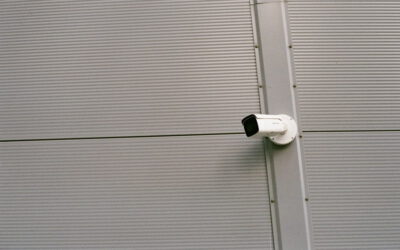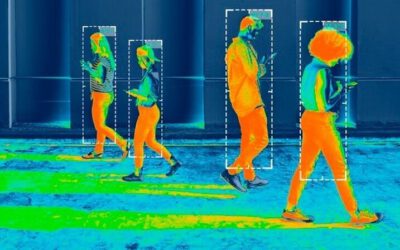How to Create a Device Based on LoRa Communication Protocol?

Those who are interested in IoT technology might have heard about LoRa many times. What is LoRaWAN? How and where is it applied? This article aims to clarify all these concerns, explaining the LoRa meaning in detail and showcasing numerous aspects of the LoRa wireless technology.
In a nutshell, LoRa stands for the long-range connectivity technology operating wirelessly and consuming little power. It has become a default solution in IoT systems due to its wireless operation and ability to serve millions of devices in one ecosystem. LoRa is highly suitable for smart cities, smart buildings, and asset tracking. Thus, the LoRa Wi-Fi technology is popular in modern, increasingly smart settings, with numerous applications for the LoRa radio technology and LoRa WAN protocol in store.

How to Use LoRa Technology?
Now let’s dwell on the subject of LoRa technology application in more detail.
- How does LoRa communication take place?
The basis of LoRa technology is the chirp spread spectrum (CSS), which uses chirp pulses to encode the information that needs to be transmitted. Interestingly, the CSS method is that of dolphin and bat communication – a natural phenomenon applied for impressive wireless connectivity. Due to the CSS basis, LoRa data transmission is resistant to disturbances and can travel long distances to the recipient.
- What are the benefits of this solution?
The major advantage of LoRa systems is that they can transmit small volumes of data by using low bit rates. Their transmission power is greater than that of regular Wi-Fi networks and Bluetooth. Thus, the technology is ideally suited for use with sensors and actuators operating in low power mode.
- What is a LoRaWAN?
The LoRaWAN protocol was developed by LoRa Alliance to simplify and standardize this technology, instructing the users and developers about how devices should communicate in the LoRa network, what data they should transmit, and how often they can do that. As a result of creating LoRaWAN using Media Access Control (AMC) protocol, the Alliance’s experts have added numerous beneficial features to the LoRa technology use.

At present, the LoRa sensors can interoperate with Wi-Fi and BLE devices, which are typically applied in consumer IoT systems and video/voice recording and transmission solutions. These devices typically operate in the short-wave range and can possess both low and high bandwidth. Besides, LoRa works with cellular products, which have higher power requirements and enjoy a broad range of uses in outdoor settings. These appliances typically function in the medium- and short-range waves and possess higher bandwidth. However, regardless of these technical distinctions, the LoRa network can connect with them all, ensuring a smooth IoT experience.
- Why apply the LoRa wireless technology?
The LoRa technology has numerous benefits for various industries and settings.
- The devices included in the LoRaWAN network have very low power requirements for operation, meaning that they can work in the low power mode. This feature allows setting some systems for over 10 years of untroubled operation with a single battery.
- The LoRaWAN sensors possess impressive signal transition capacity, with the distance they cover exceeding 10 kilometers in rural settings. Their application in urban areas is more limited due to numerous physical obstacles, but the coverage of 3 kilometers is an impressive distance.
- Indoor penetration and coverage enable this technology’s use for multi-floor buildings and industrial facilities where sensors are located in distant locations from one another.
- GPS functions of LoRa allow precise identification of objects’ geolocation based on the triangulation activity of the system. It is enough to involve three gateways to identify the end device’s physical location.
- The LoRa networks are characterized by huge capacity, effectively handling millions of signals from multiple gateways simultaneously.
- LoRa users enjoy the impressive security of all devices included in the network due to the robust Alliance certification, coupled with the security of data transmission.
- The technology enables secure public and private network creation with the help of the same hardware and software powering such systems. As a result of using LoRa, the clients get a highly cost-effective and productive network requiring minimal hardware and standard, open-source software.
- When adopting this technology, you should keep in mind that it’s more than technical connectivity. LoRa is a vast ecosystem, a global community of producers, providers, and app developers working on its improvement and accessibility.
Thus, as you can see, LoRa use is highly beneficial in many terms. It allows infrastructure optimization, cost reduction, and achievement of optimal performance in your system of sensors and actuators for whatever purpose you need it. Impressive customization, robust community support, excellent safety guarantees, and the rest of the features speak in favor of its massive adoption in the smart city and smart home settings today.
- What are the LoRa use cases?
With so many advantages of LoRa use in practice, users apply LoRa systems in various settings to accomplish numerous objectives. Here are the use cases in which the technology proved efficient.
- Smart farming
The use of LoRa trackers in crop harvesting areas can help optimize the use of water and human effort by monitoring the soil moisture status and indicating the optimal timing for irrigation.
- Smart asset management in public places
Smart buildings can be of much help in all areas of human activity. Thus, LoRa technology can make airports smarter, with automated personnel, luggage, and vehicle tracking. Smarter offices are also a reality with LoRa systems. They can ensure the proper temperature in the office rooms, optimal energy use, availability of parking lots, and efficient staff distribution across the office space.
- Smart cities
Cities have complex and intricate infrastructure that powers them and makes residents’ lives comfortable. Thus, with LoRa devices, smart city engineers can ensure optimal waste pickup schedules, repair the communication systems promptly to avoid significant leakages and power outages, and track vehicles and personnel in the smart city’s territory.
- Smart outpatient care
The use of smart trackers in outpatient care can improve patient outcomes by helping nurses detect falls and check compliance with the medication regimen.

How to Develop Device Like LoRa Mesh Networking Systems?
LoRa applications are varied and diverse, ranging from the use of nodes and gateways to the LoRaWAN-free, mesh networks implementing peer-to-peer communication between nodes. So, it’s up to you which LoRa variant to choose for your industrial or residential settings; all of them are highly efficient and productive.
Do you need to develop customized LoRa Mesh networking systems for your business needs? ADUK is an expert in LoRa devices and can help you with hardware development of any specialization or complexity. Contact our managers and consultants at https://aduk.de to find out everything you need about LoRa communication and make an informed decision about hardware and software customization for your specific business context.
Recent Posts
- What Is an Exoskeleton Suit?
- Where can you use an ultrasonic motor?
- Smart Camera: System That You Can Use for a Wide Variety of Purposes
- Why Is the Smart Toothbrush Better Than a Regular One?
- Microcontrollers: An Integral Part of Embedded Hardware
- Air Quality Monitoring System: Why It’s So Important in Modern Realities





